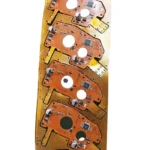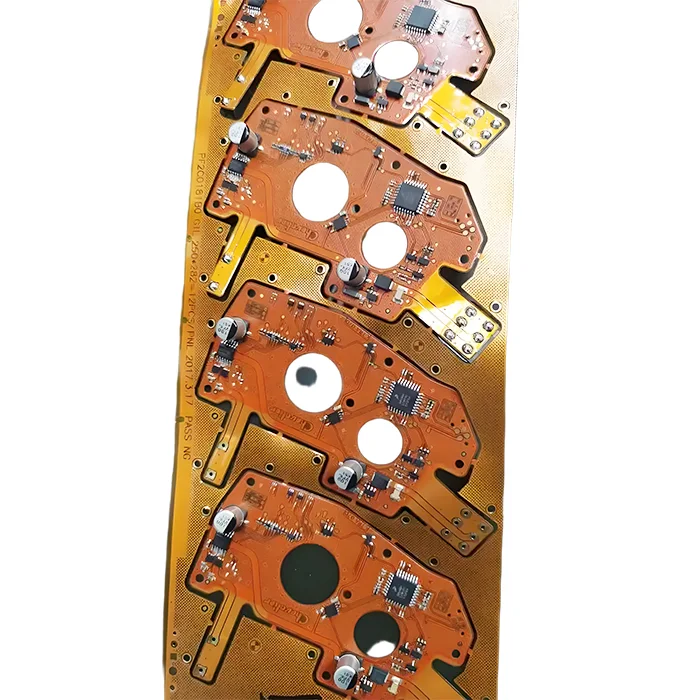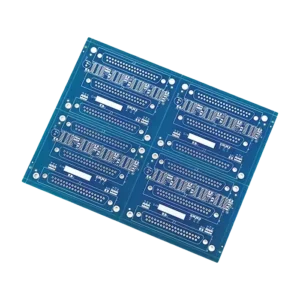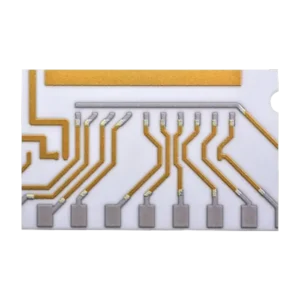Flexible Polyimide Automotive PCB
$69.90
Flexible polyimide automotive PCB is an advanced electronic solution with exceptional stability, flexibility, and chemical resistance. Capable of bending and folding without losing functionality and withstanding extreme temperatures and vibrations, flexible PCB is ideal for compact and dynamic automotive applications, such as EV battery management, ADAS, and LED lighting.
Shipping fee and delivery date to be negotiated. Send inquiry for more details.
Your payment information is processed securely. We do not store credit card details nor have access to your credit card information.
Claim a refund if your order is missing or arrives with product issues, our support team would deal with your refund within 24 hours.
| Layer Counts | 4L |
| Base Material | Polyimide |
| Board Thickness(mm) | 0.2mm |
| Max board size(mm) | 570*850mm |
| PCB size tolerance | ±0.2mm |
| Min. Hole Size | 0.15mm |
| Min. Line Width | 4mil |
| Copper Weight | 1oz |
| Surface Finish | ENIG |
| Certificate | UL, RoHS, ISO, ISO9001, ISO13485, IPC610, and REACH |
 Flexible Polyimide Automotive PCB
Flexible Polyimide Automotive PCB
| 5 star | 0% | |
| 4 star | 0% | |
| 3 star | 0% | |
| 2 star | 0% | |
| 1 star | 0% |
Sorry, no reviews match your current selections
Questions & Answers
1. What’s the minimum thickness of polyimide PCB that you can make?
The minimum polyimide thickness is 0.1mm. 0.3mm for 4-layer and 0.8mm for 10-layer.
2. What automotive systems commonly use polyimide flex PCBs?
Polyimide flex PCBs are widely used in automotive systems such as airbag controls, ADAS, infotainment displays, battery management, and camera modules.
3. Why is polyimide capable of resisting chemicals like gasoline and brake fluid?
Polymide is capable of resisting gasoline and brake fluid due to its stable aromatic structure and robust imide bonds. Such a structure is non-reactive and resistant to penetration or degradation, ensuring durability in a harsh environment.
4. What makes polyimide the best material for automotive flexible PCBs?
Polyimide is featured with unmatched thermal resistance(up to 260°C), mechanical flexibility, and chemical durability. What’s more, polyimide’s high dielectric strength provides reliable insulation. Polyimide can also maintain dimensional stability under extreme temperature fluctuations, ensuring long-term reliability.
5. What extreme automotive temperatures do these flexible PCBs withstand?
Flexible PCBs used in automotive systems can withstand temperature ranges from -40°C to +125°C, or even to 180°C in some high-reliability cases.
6. What causes delamination in flex automotive PCBs, and how to prevent it?
Delamination in flex automotive PCBs has various reasons, including poor lamination, moisture ingress, aggressive chemical corrosion, or repeated thermal cycling. To prevent delamination, workers use high-quality materials, maintain a clean fabrication environment, and apply protective coatings to enhance long-term reliability and performance.
7. How to design vias in a flex PCB to avoid cracking?
There is some advice to avoid cracking: avoid placing vias in bend areas; use teardrop pads to reduce stress at junctions between trace and pad; utilize staggered or stacked via placement to eliminate mechanical stress; reinforce vias with coverlays or stiffeners; keep the via aspect ratios within IPC standards.







